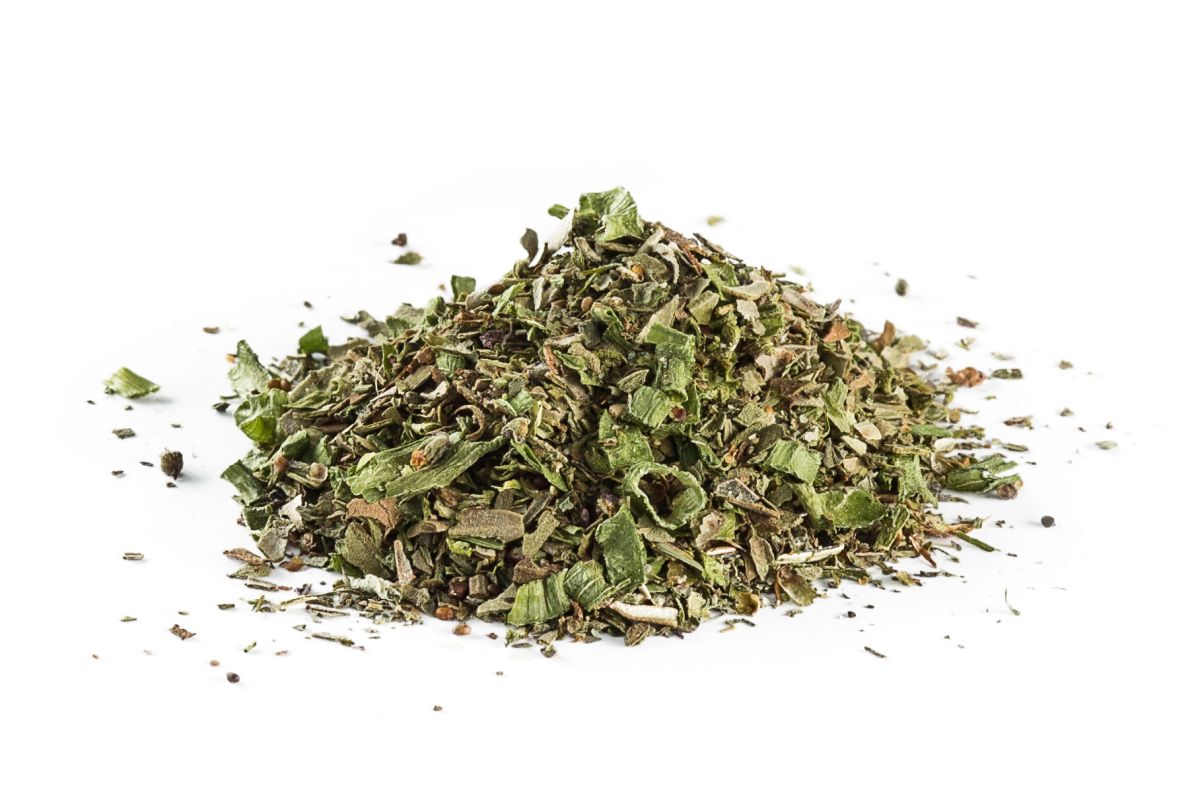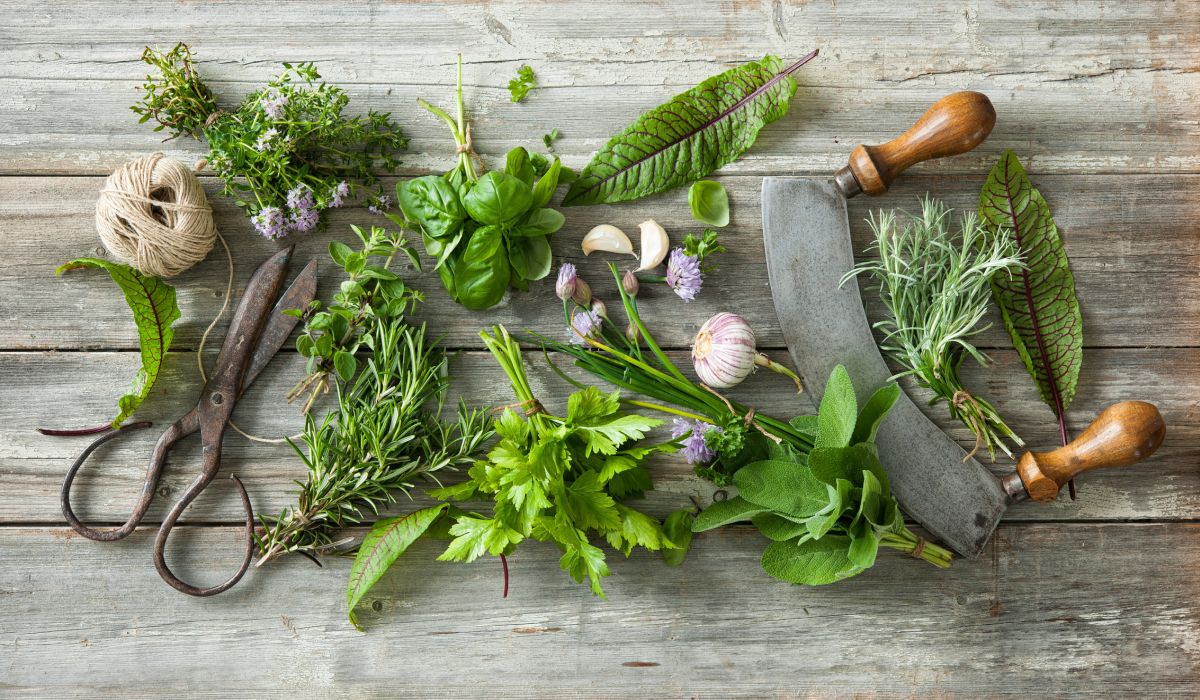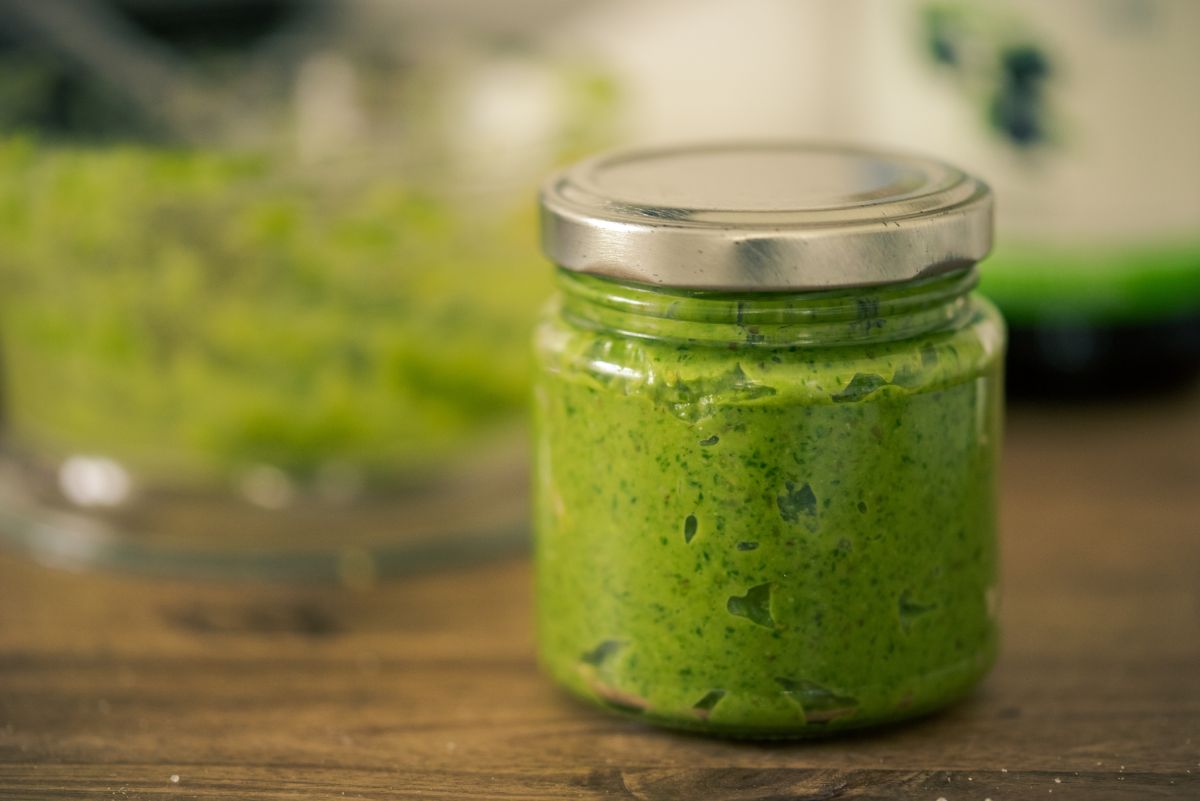When you realize you need an Italian seasoning substitute, don’t worry. There are a few alternatives to make your dishes as tasty as they would be with the classic seasoning blend. Italian seasoning is used in a lot of different ways in various recipes, so you’re bound to run out of it sooner or later.

What Is Italian Seasoning?
Italian seasoning is a blend of specific dried herbs. As the base to an Italian blend of seasonings, you’ll always find a few specific herbs in the mix:
- Oregano
- Basil
- Rosemary
- Sage
- Parsley
- Thyme
- Marjoram
Some brands will include types of spices and salts in the blend, but is not needed to be an Italian seasoning:
- Garlic flakes or garlic powder
- Red chili flakes
- Black pepper
- Salt or garlic salt
Common Uses for Italian Seasoning
Italian seasoning can be added to a lot of dishes to add flavor:
- Meatballs
- Pizza
- Chicken parmesan
- Salad dressings
- Sauces like pasta sauce or pizza sauce
- Marinades
- Grilled veggies
- Soups and stews
How to Choose a Substitute for Italian Seasoning
- Blends – if you are using another seasoning blend, make sure to read the label to see what is in the recipe and decide if those spices and herbs will complement your cooking’s flavors.
- Fresh herbs – fresh herbs are not as potent in flavor as dried herbs, so you’ll likely need about 3 times more fresh herbs than dried herbs. The same is true for pestos.
- Individual herbs – whether you’re using dried or fresh herbs, if you’re only substituting one herb for Italian seasoning, make sure you like the taste enough that it will be the only herb taste in your dish, as opposed to a blend of herbs working together to make a flavor profile.
10 Best Ingredients for an Italian Seasoning Substitute
1. Homemade Italian Seasoning Blend
If you had Italian seasoning but you’re out, chances are, you have other dried herbs in your pantry too. Make your own Italian seasoning blend using Spend with Pennies, or try a mix of your own herbs.
2. Fresh Herbs
If you have fresh herbs on hand or growing in your garden, you can easily substitute fresh herbs for dry ones, but dried herbs have a stronger flavor, so you might need to add more fresh herbs to your taste. Plant-Based Recipes use fresh herbs that you can use right away or dry out for future use.
3. Herbes de Provence
Herbs de Provence is a french seasoning mix that is very similar to Italian seasoning, but it usually has lavender in it, which might drastically change the flavor profile of your cooking. Spiceography compares both blends.
4. Greek Seasoning
Similar to Italian seasoning, Greek seasoning blends have a herb base blend made from oregano, basil, parsley, and garlic powder. It has dill included in the blend, which might change your recipe’s final taste. According to Spice Rally, Greek seasoning is spicier, whereas Italian seasoning is more savory.
5. Pizza Seasoning
The base of pizza seasoning is almost identical to Italian seasoning, with the addition of garlic, onion powder, and fennel, depending on the brand. It is a great substitute for Italian seasoning since the additional ingredients pair well with Italian cooking. Spice Rally compares both.
6. Dried Oregano and Basil
Most Italian cooking recipes call for both these ingredients, so simply replacing an Italian seasoning blend with these two ingredients should yield a tasty dish. Masterclass explains how you can use oregano and compares it with basil.
7. Creole Seasoning
Creole seasoning is a spicy blend of herbs and spices. It contains oregano, basil, black and white pepper, and cayenne pepper among the ingredients, which is ideal if you want a spicy dish, but still want some of the herby notes from the oregano and basil. Louisiana Kitchen & Culture use creole seasoning in their Italian meatballs recipe.
8. Za’atar
Za’atar is a middle eastern spice blend with a base of oregano. It pairs well with lamb and has sesame seeds added to the blend. Bowls are the New Plates shares some insight on the taste and use of it if you haven’t tried it yet.
9. Pesto
If you’re familiar with basil pesto, you might know many companies have released other pesto blends, including Italian herb pesto, which would work well in any dish that requires dried herbs. Most pestos feature tree nuts or pine nuts, which will add richness to your dish. Cook Smarts explains how to use pesto in many different ways.
10. Cajun
Cajun seasoning is a blend of spices and a few herbs. You’ll likely find thyme in any cajun seasoning blend, but it’s important to note that it’s not herb-like at all, it is spicier than Italian seasoning and best used in dishes where you want spice more than herbal notes. All Recipes break down what goes into a Cajun blend.
Tips for Italian Seasoning Substitution
- Add more as you need – start with small amounts of the replacement you chose for your Italian seasoning, and slowly add more to your taste.
- Test – test a little bit of the substitute for Italian seasoning first by trying it in a separate container blended with your dish to see if the flavors will work together.
- Salt – if your usual Italian seasoning you know and love contains salt, or even if it doesn’t, the opposite might be true for your substitution. So plan accordingly when it comes to adding salt to your dish.


Leave a Reply